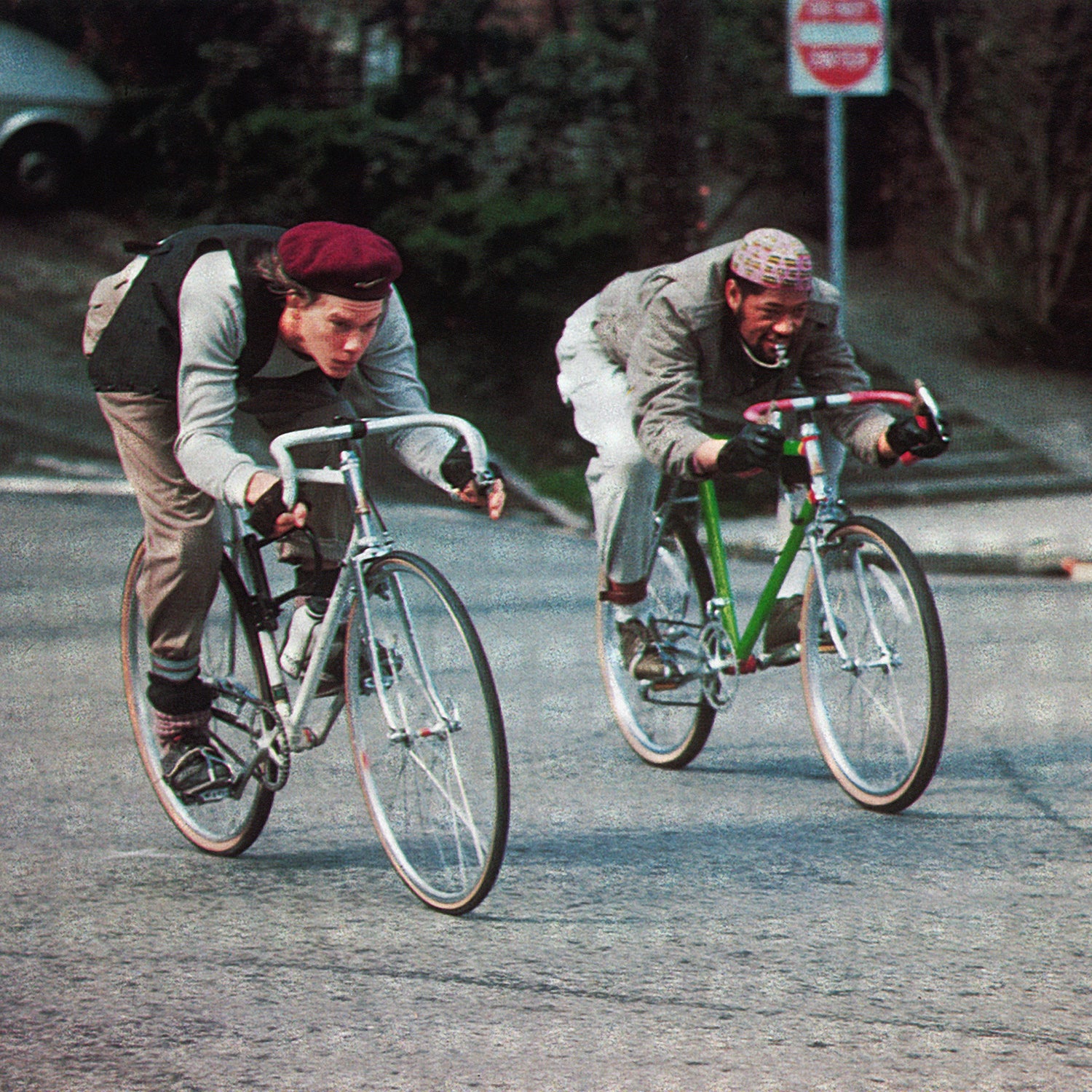We don’t think much of the ambient sound in TV shows or movies until they go wrong, like when Kevin Bacon’s track bike in the 1986 classic occasionally makes inexplicable freewheel sounds. We relate to our own steeds similarly, in that we don’t really pay much attention to how they sound until something starts creaking somewhere, at which point we put our entire lives on hold and spare no expense in our attempts to rid ourselves of the distraction.
Car manufacturers know that we have such a visceral response to sound that they now pipe engine noises and exhaust sounds . Bike companies aren’t quite there yet, but there are certain sounds that have come to connote high performance, such as the whooshing of carbon wheels and the aggressive snarl of a tightly-sprung set of freewheel pawls. Yet the sound of speed is also ever-changing. Recently, I’ve been riding a vintage Colnago with eight-speed Dura Ace hubs. Their precision purr is barely audible and wholly sublime, but it would never fly today, when a coasting race bike is supposed to be nearly as loud and obnoxious as a heavily-modded Honda Civic. The soft snick of the first-generation STI lever is also badly outdated, and while it shifts as well as it did 25 years ago it’s positively quaint compared to the futuristic servo whirring that now alerts you to the fact that the rider on your wheel is about to attack.
Other once-familiar cycling sounds have gone virtually extinct. As cables are routed internally or eliminated altogether, you seldom hear the “ding” they make when they contact a steel frame tube. (Steel was a material they once used to make bikes. It was like carbon, but durable.) The sound of a chain clanging against a chainstay was once as much a part of mountain biking as shin bruises and peeing in the woods; now it’s been silenced forever by the advent of the clutch derailleur. Executing a gear change was also once a cacophonous affair. Before indexed shifters and the ramps that help move your chain swiftly and silently from one cog to another, your drivetrain would crackle and rat-a-tat-tat like a Gene Krupa drum solo in between gears. And if you didn’t get it just right, the rattle would continue even after the gear shift was complete, and you’d have to make micro-adjustments to your friction shifter until it ran silently.
New or old, bikes can sound fast, but they can also sound slow. A bicycle’s acoustic properties are probably a better indicator of slowness than they are of speed—if your bike sounds fast it may not be, but if it sounds slow it probably is. Still, the sounds of sluggishness can also have an outsized effect on your perception of the bike and be downright demoralizing. Few things sound slower than the humming and thrumming of knobby tires on pavement; no doubt they’re slower than they’re slick counterparts, but if it weren’t for that sound you probably wouldn’t feel like the power was being sucked from your legs with every pedal stroke. A dry, chirping chain will also make you feel like you’re a medieval dungeonmaster operating some kind of torture contraption. True, you could be through your unlubed chain, which is enough to reduce your speed from 20mph to 19.5mph, but it feels like much, much more, which is why we’re willing to spend money on .
But the most dispiriting sounds of all are often the most benign. Today’s bikes are made of large-diameter sound-amplifying tubing, and they’re held together with lots of low-torque fasteners, so a loose bolt here or a dry thread there can be all it takes for the thing to sound like it’s falling apart. Such sounds really prey on your mind if you’re riding carbon, since in the back of your mind you’re always just a little bit scared that something might fail catastrophically, however unfounded that fear may be.
But the most transporting sounds are the ones your bike makes on various surfaces: the subtle sucking sound of tires on wet pavement, the gentle clicking of loose rocks beneath your mountain bike wheels, and that tantalizing crunching sound as you leave the road and hit the gravel.
The bike companies aren’t pumping any of these sounds out via speakers hidden in your frame tubes, but as components continue to go electronic it may only be a matter of time.


